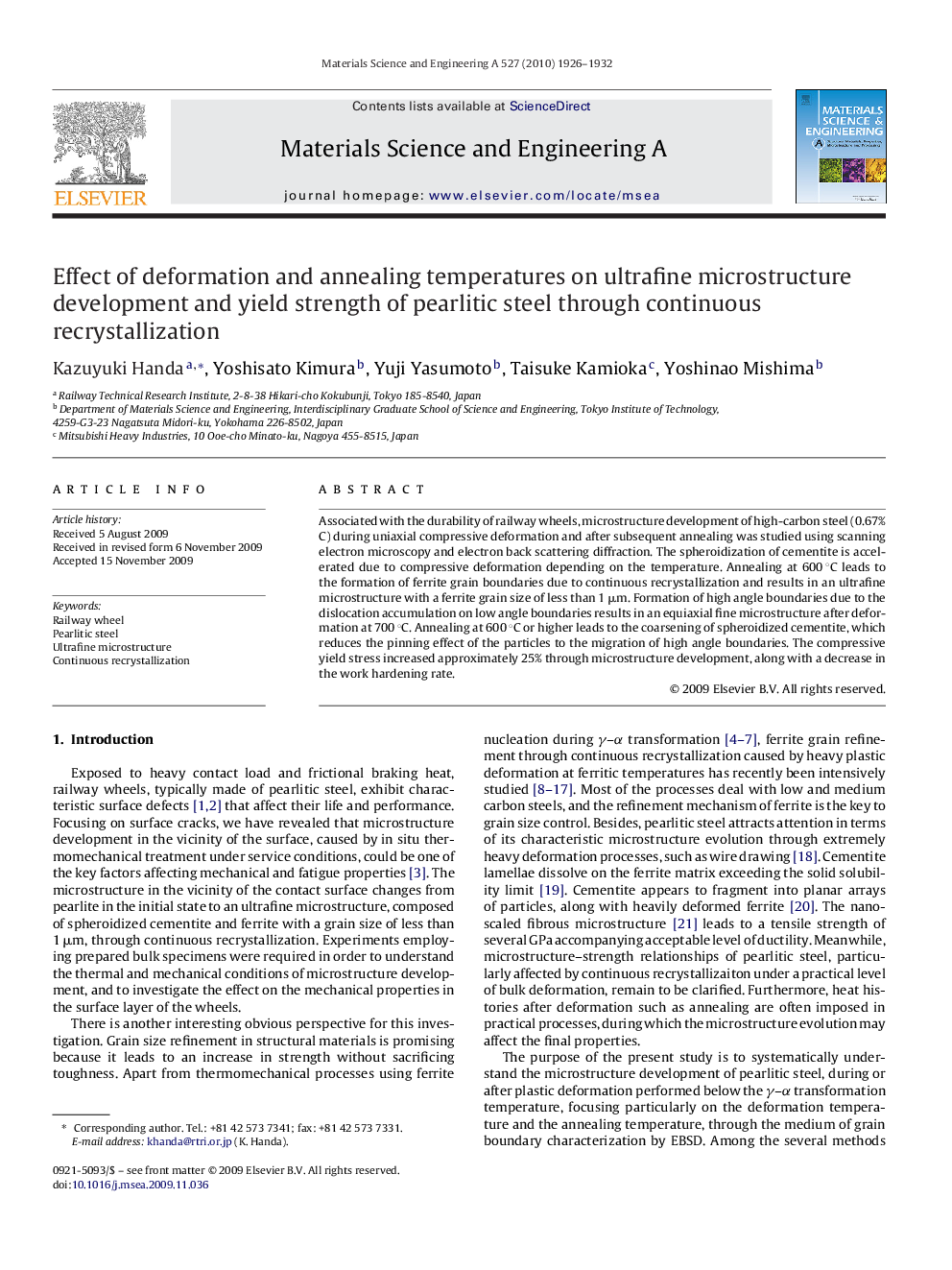| Article ID | Journal | Published Year | Pages | File Type |
|---|---|---|---|---|
| 1580587 | Materials Science and Engineering: A | 2010 | 7 Pages |
Abstract
Associated with the durability of railway wheels, microstructure development of high-carbon steel (0.67% C) during uniaxial compressive deformation and after subsequent annealing was studied using scanning electron microscopy and electron back scattering diffraction. The spheroidization of cementite is accelerated due to compressive deformation depending on the temperature. Annealing at 600 °C leads to the formation of ferrite grain boundaries due to continuous recrystallization and results in an ultrafine microstructure with a ferrite grain size of less than 1 μm. Formation of high angle boundaries due to the dislocation accumulation on low angle boundaries results in an equiaxial fine microstructure after deformation at 700 °C. Annealing at 600 °C or higher leads to the coarsening of spheroidized cementite, which reduces the pinning effect of the particles to the migration of high angle boundaries. The compressive yield stress increased approximately 25% through microstructure development, along with a decrease in the work hardening rate.
Related Topics
Physical Sciences and Engineering
Materials Science
Materials Science (General)
Authors
Kazuyuki Handa, Yoshisato Kimura, Yuji Yasumoto, Taisuke Kamioka, Yoshinao Mishima,
